This Star of Multiple Movies Is Also a Stellar Trainer and War Machine
On April 7th 1967 the Aerospatiale (Airbus Helicopters) Gazelle helicopter flew for the first time. The Gazelle was one of the most advanced helicopter designs in the world when it was introduced and several newer designs have utilized its then-unique Fenestron tail fan system. The Gazelle combines relatively small overall size (less than 40 feet long) with the ability to carry five passengers. Originally conceived as a replacement for the successful Sud Aviation SE 3XX Alouette (Lark) series of helicopters, the SA 34X Gazelle series has been adapted to perform dozens of missions and roles for both military and civil operators. And that sound. No other chopper sounds quite like a Gazelle!
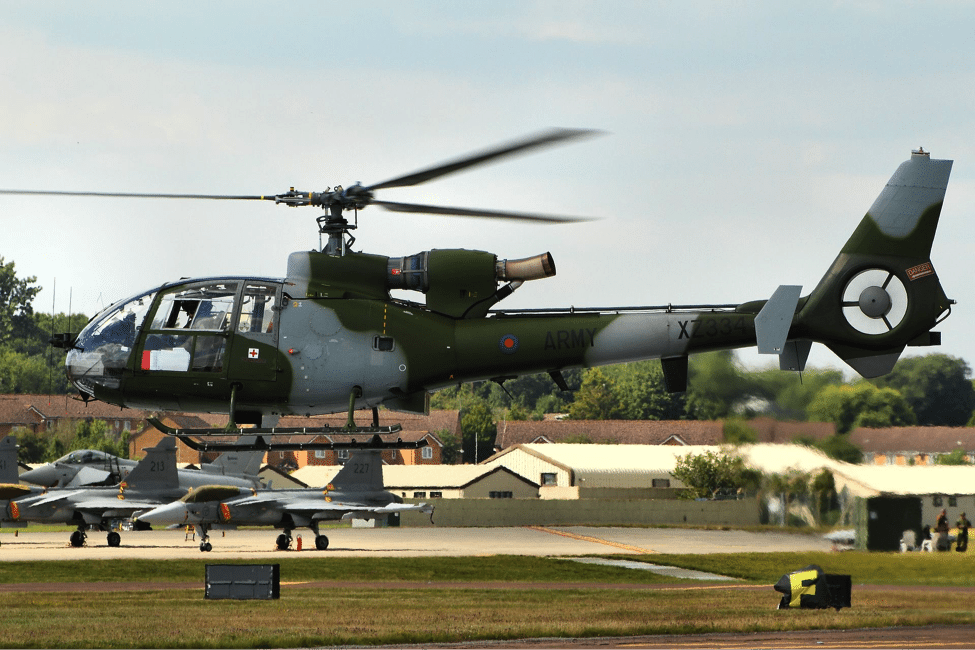
Teaming Up to Build a Winner
While the Gazelle is clearly a relative of the Alouette, the similarities are superficial only. In 1963 Sud Aviation became aware of both British and French military requirements for a new utility helicopter design. The two largest helicopter builders in their respective countries, Westland of Britain and Sud Aviation of France, entered into an agreement to design and build the new Gazelle. The design of the cabin was predicated on the ability carry a litter patient, so although it is roomy it is also aerodynamically efficient and adaptable. Simple where it needed to be, with skid landing gear and an industry standard turbine engine turning a three bladed main rotor, yet innovative with features like the Fenestron tail fan and long-life components with low maintenance requirements, the Gazelle was built with longevity and usability in mind.
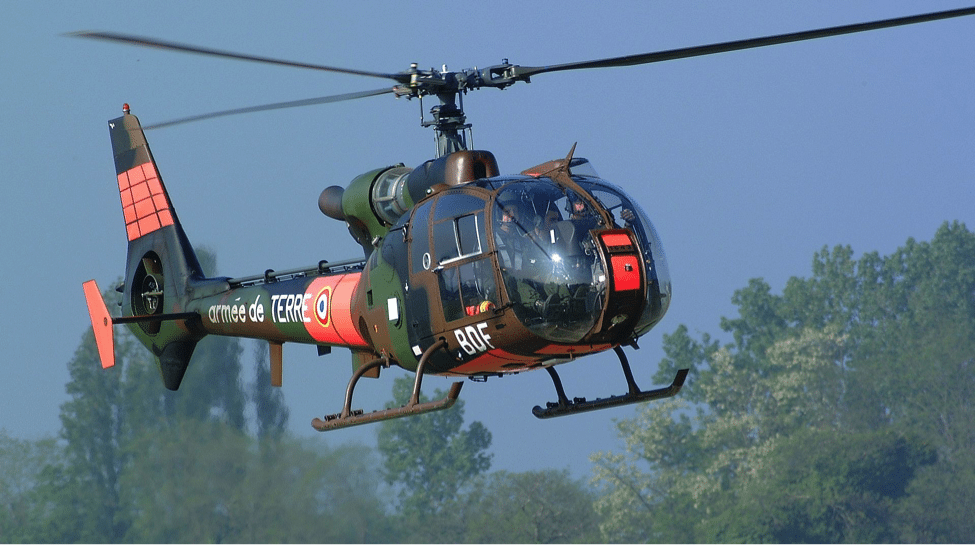
Getting It Right and Keeping It Right
It took several years of development work to get the Gazelle into production. The prototype itself was not equipped with either the Fenestron tail fan or the intended rigid main rotor system. Once the two companies got things worked out in 1969, production of the Gazelle began. The first production Gazelle took flight on August 6th 1971. Since then, like so many other aircraft, the Gazelle has been refined and improved with more powerful engines and more robust transmissions. Avionics have been upgraded. Smaller but important upgrades to cockpit panel lighting, seating, and a host of other improvements have kept Gazelles flying in military and civil hands around the world.
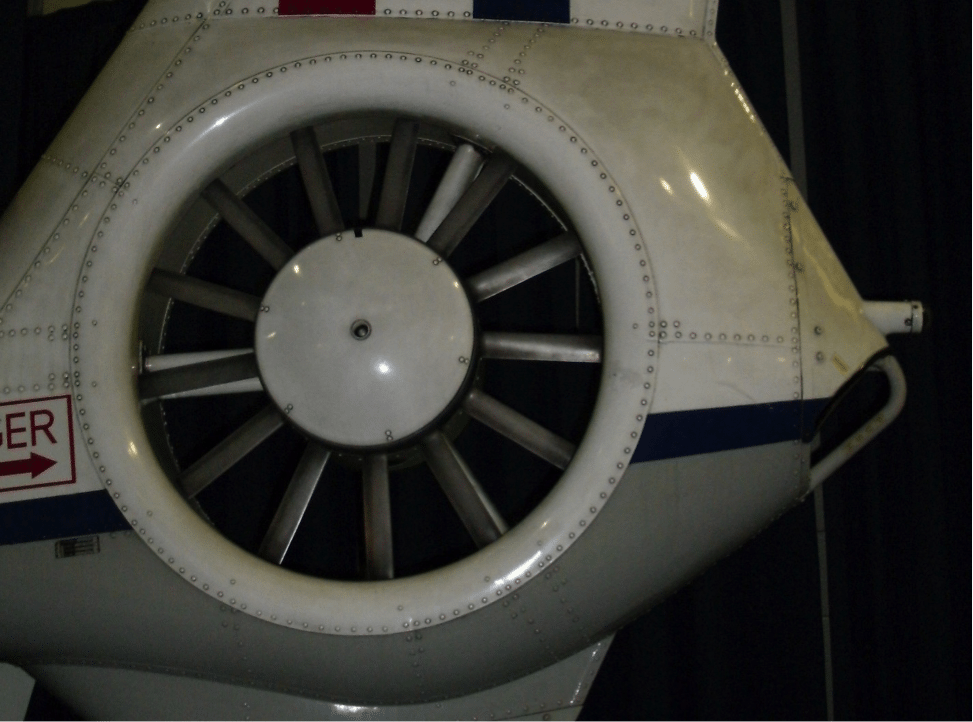
Everywhere With the Brits
For the British, the Gazelle is one of only two aircraft (the other being DeHavilland’s Chipmunk) flown by the Royal Air Force (RAF), The Royal Navy (RN), The Royal Army (RA), and the Royal Marines (RM). Used primarily for training by both the RAF and RN, the Marines and the Army have used the Gazelle in combat during Operation Corporate (1982 Falklands), Operation Granby (1990-1992 Gulf War I), Operation Grapple (1993-2003 Balkans), Operation Joint Endeavour (1996 Bosnia), Operation Guardian (1999 Kosovo), Operation Barras (2000 Sierra Leone), Operation Fingal (2002 Afghanistan), Operation Telic (2003-2008 Iraq) and Operation Herrick (2006-2014 Afghanistan). One of the Gazelle’s strengths is adaptability, and British Gazelles have been fitted with laser target designators, thermal imaging systems, Doppler radar, Nightsun illumination equipment, machine guns, and guided missiles. The Brits have also found that the Gazelle is tough and reliable, reporting the highest combat availability of any British helicopter type in Iraq and Afghanistan.

French Twist
The French have been utilizing Gazelles since 1973. The majority of the French machines are powered by uprated versions of the Turbomeca Astazou engine to support additional weapons and guidance systems. French combat experience in Chad (1980s), the former Yugoslavia (1990s), Djibouti (1991–1992), Somalia (1993), Cote d’Ivoire (2002–present), Afghanistan (2002–present), and Mali (2013) were supported by Gazelles. French Gazelles have fired missiles at Somali pirates and Iraqi tanks. Equipped in many cases with guided Mistral air-to-air missiles or Euromissile HOT anti-tank missiles with sighting systems and designators mounted on top of the cabin, the French have sold hundreds of these pocket-sized tank killers to countries lacking budgets for the high-tech, high-cost attack helicopters being developed today. Gazelles have also been built under license by SOKO in Yugoslavia and the Arab British helicopter Company in Egypt. Production totals have exceeded 1,100 airframes.
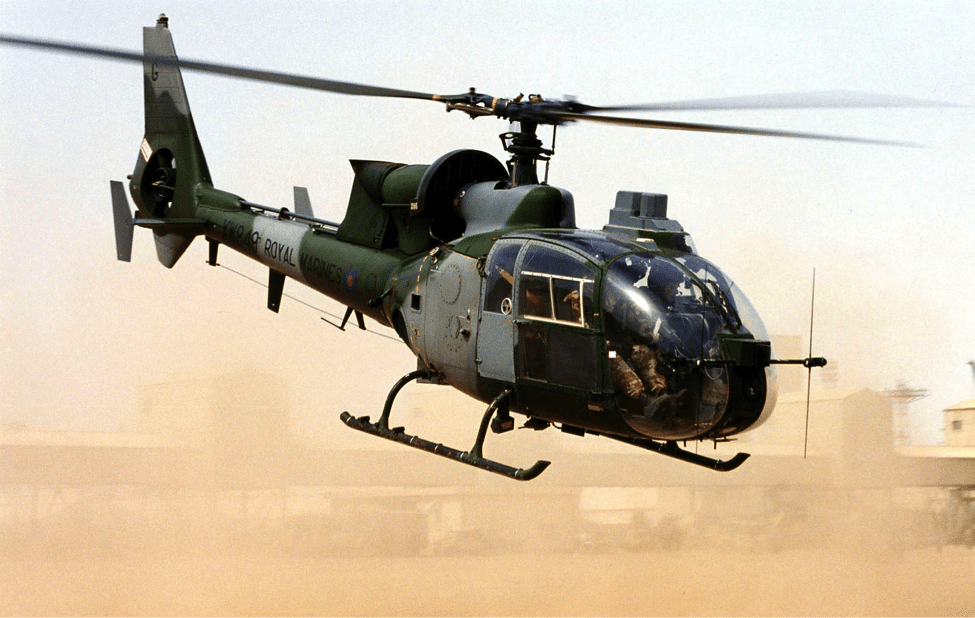
Adaptability is Built-In
Gazelles have been adapted and upgraded with ferry tanks, infrared (IR) signature suppression systems, externally mounted cannon and machine guns with ammunition supplies in the cabin, rescue winches, particle filters for sandy environments, cabin heaters, emergency floatation equipment, high landing skids, engine anti-icing systems, and adjustable landing lights. Civilian examples of the Gazelle are also equipped with a baggage compartment. Gazelles utilized by law enforcement agencies can be equipped with stabilized camera mounts and lights along with other specialized surveillance imaging equipment. Military Gazelles have been upgraded with the latest armament options, 3D navigational displays, electronic flight instrumentation system (EFIS) cockpit displays, night-vision goggle compatibility, ballistic armor packages, direct voice input (DVI) systems for voice control of aircraft systems, and advanced autopilot systems.
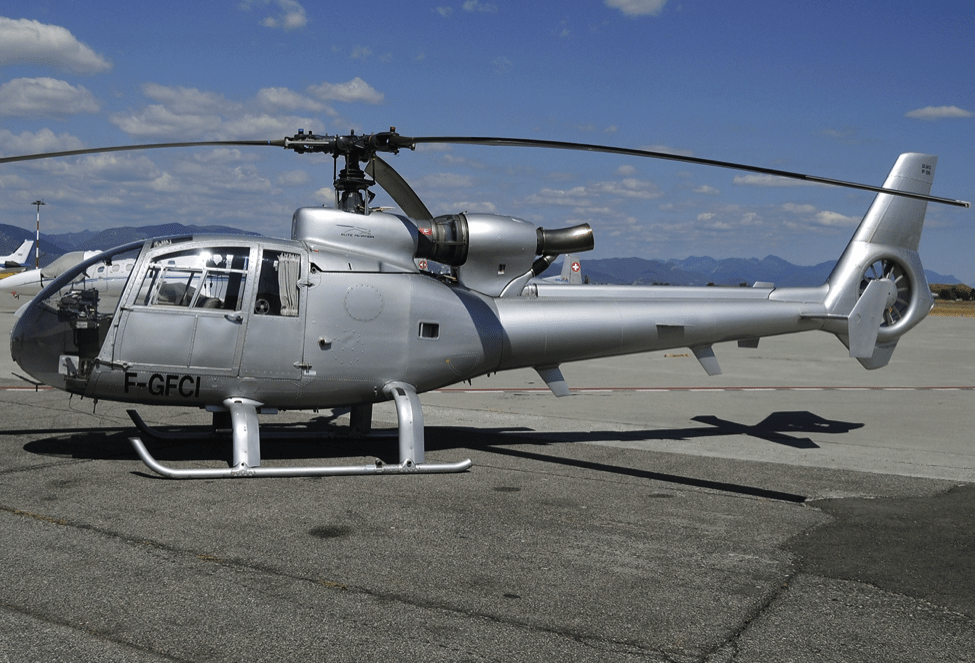
Ease of Maintenance
Ease of maintenance and pilot-friendly operations are hallmarks of the Gazelle. Bearings in the Gazelle are life-rated without need for continuous application of lubrication. Most fluid tanks don’t require constant inspection. When the helicopter was designed emphasis was placed on minimal maintenance requirements. Minimal maintenance usually means low operating costs. Many components in the Gazelle were designed for a 700 hour service life, and some critical components have service lives of up to 1200 hours before replacement is required. The Gazelle was also the first helicopter to be rated for single pilot instrument flight conditions (IFR) flight. Surprisingly the Gazelle is not equipped with a throttle or a trimming system. A sophisticated autopilot system aids the pilot and keeps workloads manageable.
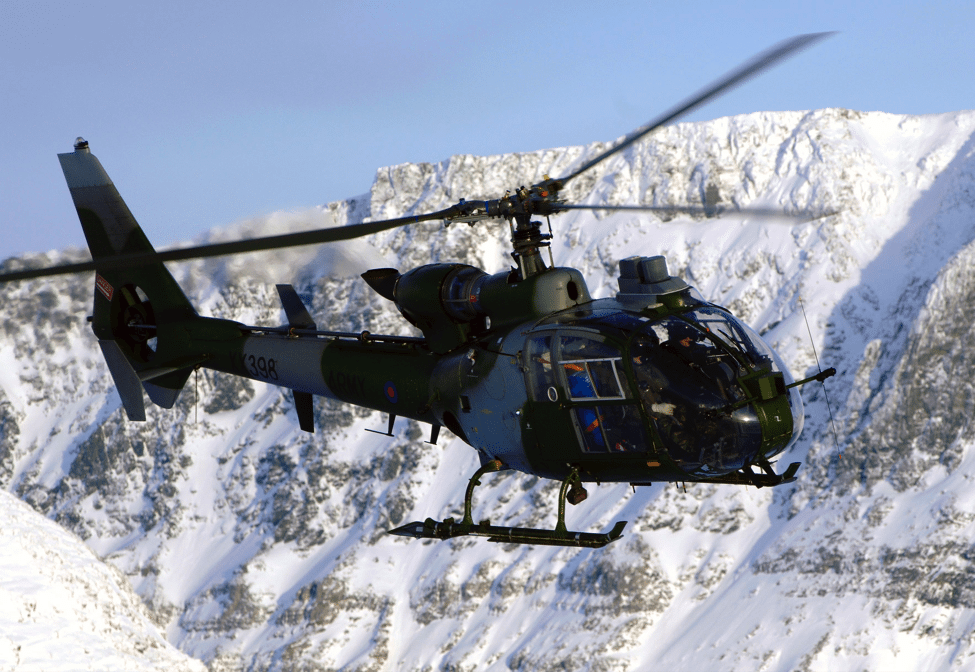
Team Player
Current and former military operators of the Gazelle helicopter series include Angola, Bosnia and Herzegovina, Burundi, Cameroon, Chad, People’s Republic of China, Cyprus, Ecuador, Egypt, France, Gabon, Guinea, Iraq, Ireland, Kenya, Kuwait, Lebanon, Montenegro, Morocco, Qatar, Rwanda, Senegal, Serbia, Republika Srpska, Syria, the United Kingdom, United Arab Emirates, and Yugoslavia. Civil operators of the Gazelle are found all around the world.

Movie Star Chopper
Gazelles have starred in many movies and television shows over the years. Perhaps the Gazelle with the most screen cred isn’t really a Gazelle at all. Used as the basis for the highly modified and just as heavily armed “anti-riot” helicopter star of the 1978 Columbia/Rastar movie Blue Thunder, and the exceedingly short-lived television series of the same name, was a Gazelle, but Avgeeks knew that as soon as they heard it. At least when it wasn’t in “whisper mode” that is. Clint Eastwood’s character Ben Shockley was chased and liberally shot at from a pesky but maneuverable Gazelle in the 1977 Warner Bothers film The Gauntlet. How many more movies or television shows do you know of in which Gazelles were used?
[youtube id=”cuYOFkj7KhM” width=”800″ height=”454″ position=”left”]
